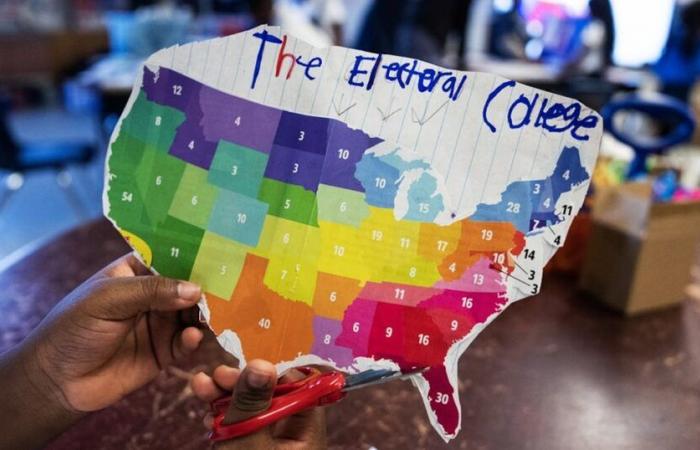CNN’s data reporter Harry Enten and Politico’s Jeff Greenfield concluded much the same as Cohn. FiveThirtyEight, meanwhile, became hypnotized by scenarios where Harris and Trump tied in the Electoral College, 269–269, throwing the election into the House of Representatives. That too threw cold water on the idea that Republicans enjoy any lingering Electoral College advantage.
By now, dear reader, you’re getting impatient with me because I haven’t addressed the main reason everybody thinks the Electoral College favors Republicans: the small-state advantage. Small states enjoy disproportionate clout in the Electoral College because every state gets one elector per congressional district plus two. Thus, with not quite 600,000 residents, deep-red Wyoming, the least-populous among the 50 states, gets three electors, which is about twice as many as New Haven, Connecticut—even though New Haven has the same population. To add insult to injury, New Haven must share its 1.4 electors with nearby Middletown and Stratford. So yes, the small-state advantage is real.
But it isn’t especially Republican. The idea that states with teensy populations are all red, or even mostly red, is a myth. The second-least-populous of the 50 states is Vermont, with a population of not quite 650,000, and Vermont (three electors) hasn’t voted Republican in a presidential election since 1988. Of the 10 smallest states, all with three or four electors, five are red—Wyoming, Alaska, the Dakotas, and Montana—and five are blue—Vermont, Delaware, Rhode Island, Maine, and New Hampshire. Add in the deep-blue District of Columbia (three electors) plus the remaining four-elector states—blue Hawaii, red Idaho, and red West Virginia—and the score evens up again: seven Republican states to seven Democratic states or territories. (The District is the only U.S. territory that’s permitted to vote for president in the general election, though all of them hold primaries.)
Swiss






